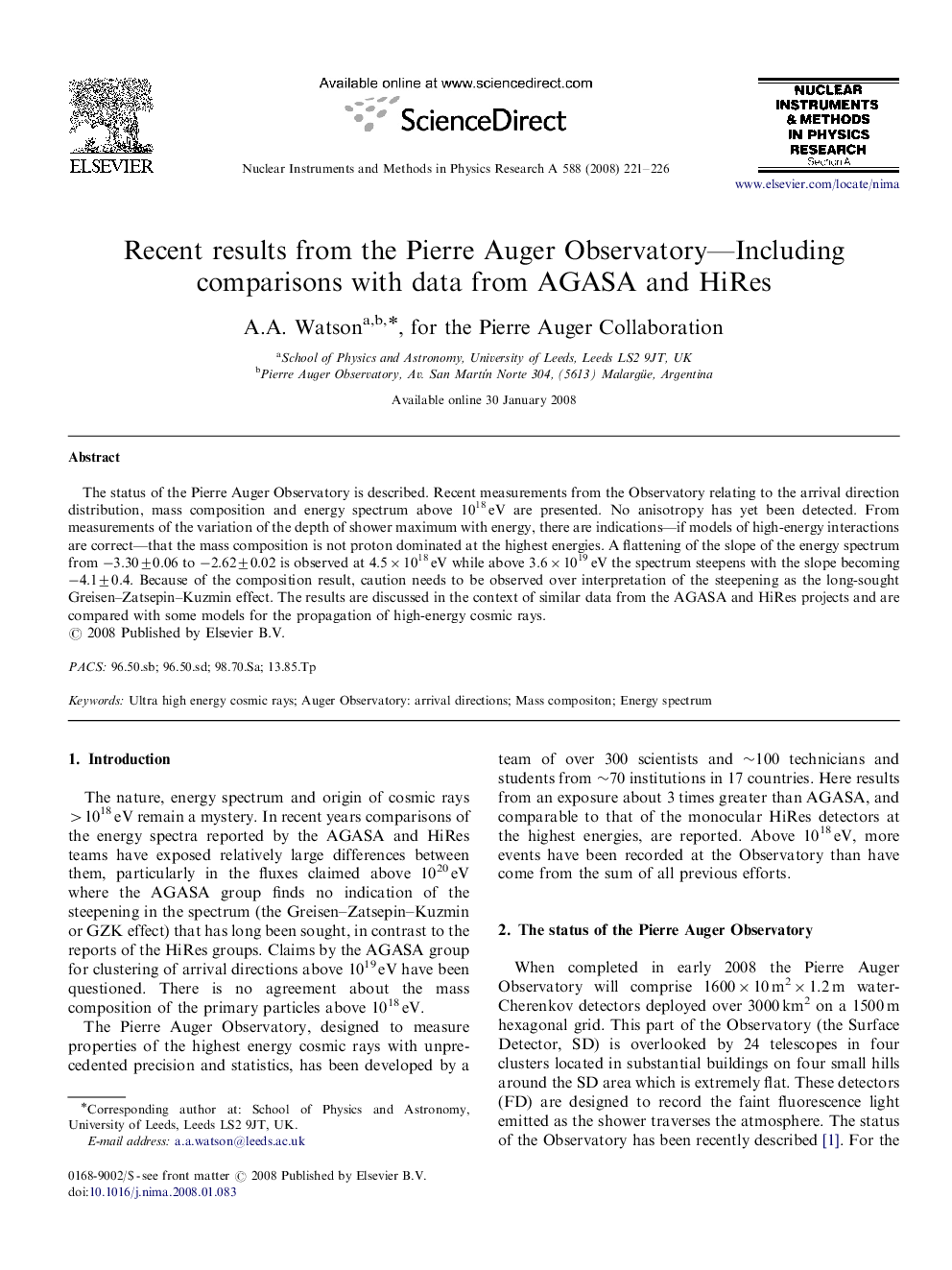| Article ID | Journal | Published Year | Pages | File Type |
|---|---|---|---|---|
| 1829764 | Nuclear Instruments and Methods in Physics Research Section A: Accelerators, Spectrometers, Detectors and Associated Equipment | 2008 | 6 Pages |
The status of the Pierre Auger Observatory is described. Recent measurements from the Observatory relating to the arrival direction distribution, mass composition and energy spectrum above 1018 eV are presented. No anisotropy has yet been detected. From measurements of the variation of the depth of shower maximum with energy, there are indications—if models of high-energy interactions are correct—that the mass composition is not proton dominated at the highest energies. A flattening of the slope of the energy spectrum from −3.30±0.06 to −2.62±0.02 is observed at 4.5×1018 eV while above 3.6×1019 eV the spectrum steepens with the slope becoming −4.1±0.4. Because of the composition result, caution needs to be observed over interpretation of the steepening as the long-sought Greisen–Zatsepin–Kuzmin effect. The results are discussed in the context of similar data from the AGASA and HiRes projects and are compared with some models for the propagation of high-energy cosmic rays.
